|
 |
BY JOHN PRADOS
Some called Dien Bien Phu the “Chamber Pot” because the defenses were in a valley ringed by much higher hills. The high command had viewed it as a sort of strategic barrier, preventing the Viet Minh revolutionaries from spilling into the barely protected Indochinese state of Laos. Lt. Xavier Moissinac flew up to see for himself. The hills were as advertised, but the French defenses looked strong. The young officer examined the positions. One or two were stronger than the others but all seemed solide, appearing well-fortified, and the “entrenched camp” bristled with guns, tanks, and even a unit of fighter-bombers at its airstrip.
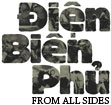 Lt. Moissinac had a reasonable basis for judgment—and not simply because a staff officer of the Corps expéditionnaire français en Extrême Orient (CEFEO) accompanied him. Moissinac was a mechanized officer, a veteran of hard fighting with the Foreign Legion’s 1st Cavalry Regiment near Hue and along the Perfume River—the notorious “Street Without Joy” that the French had attempted to secure with a big sweep in the spring and summer of 1953. Before that he had been with the French Battalion in Korea, fighting alongside United Nations forces. In World War II he had fought with the French Resistance in his native Cher in Central France. Moissinac had volunteered for Korea and gone there as a reserve officer. Then he’d been sent to Indochina. Lt. Moissinac had a reasonable basis for judgment—and not simply because a staff officer of the Corps expéditionnaire français en Extrême Orient (CEFEO) accompanied him. Moissinac was a mechanized officer, a veteran of hard fighting with the Foreign Legion’s 1st Cavalry Regiment near Hue and along the Perfume River—the notorious “Street Without Joy” that the French had attempted to secure with a big sweep in the spring and summer of 1953. Before that he had been with the French Battalion in Korea, fighting alongside United Nations forces. In World War II he had fought with the French Resistance in his native Cher in Central France. Moissinac had volunteered for Korea and gone there as a reserve officer. Then he’d been sent to Indochina.
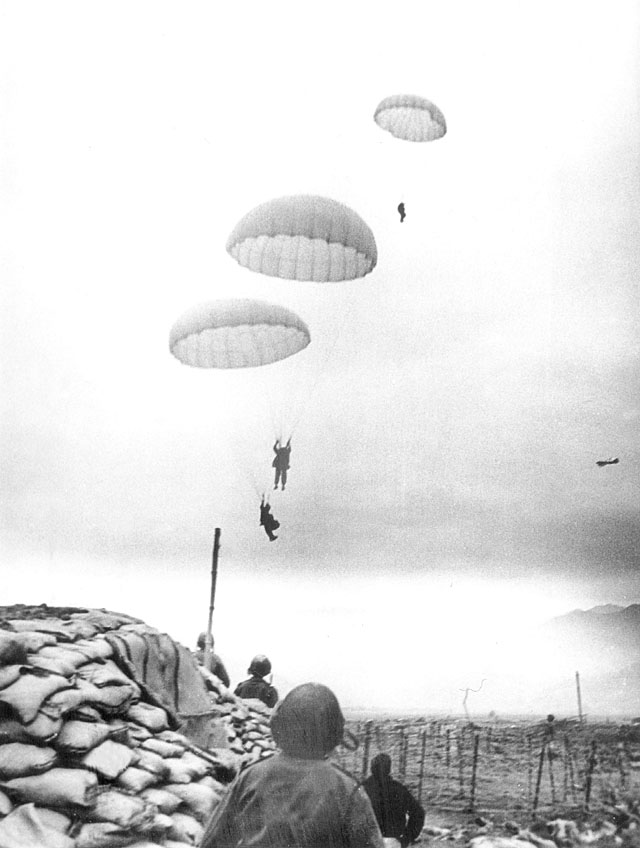 Moissinac was just the latest visitor to parade through Dien Bien Phu. He was preceded by French and American generals and admirals, some of the French chiefs of staff, the defense minister, the Expeditionary Corps commander in chief, and his regional commander for northern Vietnam (which the French called Tonkin). Reporters also had made the journey. Visitors had been impressed with the aura of operations. Dien Bien Phu had been a place of constant movement as troops occupied new positions and made forays into the hinterland. Moissinac was just the latest visitor to parade through Dien Bien Phu. He was preceded by French and American generals and admirals, some of the French chiefs of staff, the defense minister, the Expeditionary Corps commander in chief, and his regional commander for northern Vietnam (which the French called Tonkin). Reporters also had made the journey. Visitors had been impressed with the aura of operations. Dien Bien Phu had been a place of constant movement as troops occupied new positions and made forays into the hinterland.
More recently, the atmosphere had become ominous, with signs of impending attack. The French command had expected an offensive in late January 1954, but nothing had happened. Now the storm clouds were gathering anew.
Xavier Moissinac had arrived at Dien Bien Phu not as a cavalry officer but as the editor in chief of the Expeditionary Corps magazine, Caravelle. Members of the foreign press had gathered in Hanoi, the seat of the Tonkin theater command, and were clamoring for news from this mountain fortress some three hundred miles away.
Military men, too, were starved for information. A feature in a controlled publication such as Caravelle could be just the thing. Lt. Moissinac collared a couple of French Army photographers in Hanoi and brought them along on his journey. Moissinac reached Dien Bien Phu on March 12, 1954. The tempest erupted the next day.
Many Reasons Why
A pair of military disasters during the first few days of what became a siege set the scene for Dien Bien Phu. Two of the best-fortified strongpoints, foothill positions called “Beatrice” and “Gabrielle,” fell to the Viet Minh’s mass assaults. Heavy artillery bombardments battered the center of resistance in the valley and made its airstrip useless in the daytime—and after a period, at night as well. Stunned by the intensity of the Viet Minh attacks, half the men in a T’ai Montagnard battalion melted away, forcing the French to abandon two low hills that formed half the strongpoint called “Anne-Marie.” Once the Viet Minh consolidated on the “Gabrielle” and “Anne-Marie” hills and placed machineguns there, Dien Bien Phu’s airstrip closed for good. That began a gradual constriction that eventually would throttle the entrenched camp. French commanders, the government in Paris, and even allies such as the Americans and British were thrown into increasingly desperate measures to try to help the beleaguered French fortress.
Xavier Moissinac would be one soldier who was lucky, though perhaps it did not seem so at the time. Making his rounds of the strongpoints when the Viet Minh bombardment began, a shell blasted a bunker and wounded Moissinac in the head and the foot. He was patched up by Dien Bien Phu’s redoubtable Dr. Paul Grauwin. Photographer Daniel Camus snapped a picture of Moissinac sitting against the wall of a bunker, which the French Army released to illustrate the brave fighters at the entrenched camp. The photo was published a few days later in the French newspaper, Figaro (and later on the cover of Paris Match). Moissinac’s father only learned that Xavier had gone to Dien Bien Phu when he saw his picture in the paper. The good news was that the Caravelle editor escaped the maelstrom and was evacuated to Lannessan Hospital in Hanoi, where he made a full recovery.
Since 1954 Dien Bien Phu’s participants, along with historians, officials, military observers, and the public, have struggled to understand what happened and why. The French had a western army with sophisticated communications and plentiful supplies. The CEFEO had the biggest guns at Dien Bien Phu—and the only tanks. The French had an air force that could attack the lengthy Viet Minh supply lines as well as provide battlefield support. They were reading the Viet Minh codes. They could reinforce with elite paratroopers. How could they lose?
Yet the opposite argument is equally sustainable. In occupying Dien Bien Phu, the CEFEO had put a large force in a place certain to tempt the Viet Minh to attack. Indeed, that had been a consideration for French Commander in Chief Gen. Henri Navarre in deciding to hold Dien Bien Phu. In doing so, Navarre had placed this alluring quarry in tactically inferior positions in a mountain fastness inaccessible except by air. Supplies could arrive only one way, and as the French lost ground it became even more difficult to receive them. Worse, the entrenched camp was located at such a distance from French airbases that warplanes could spend only a brief amount of time over the valley, and supply planes had to carry reduced loads.
As for the entrenched camp itself, its redoubts, though fortified, were not capable of withstanding the firepower the Viet Minh brought to the battle. The French artillery was not bunkered in—and was thin for a force of the size deployed—while the camp’s reserves were hampered by assignment to defend positions in addition to their tactical role. Moreover, the reserves had not rehearsed the relief missions they would most probably be called upon to execute.
Meanwhile Gen. Navarre and his regional commander for Tonkin, Gen. René Cogny, 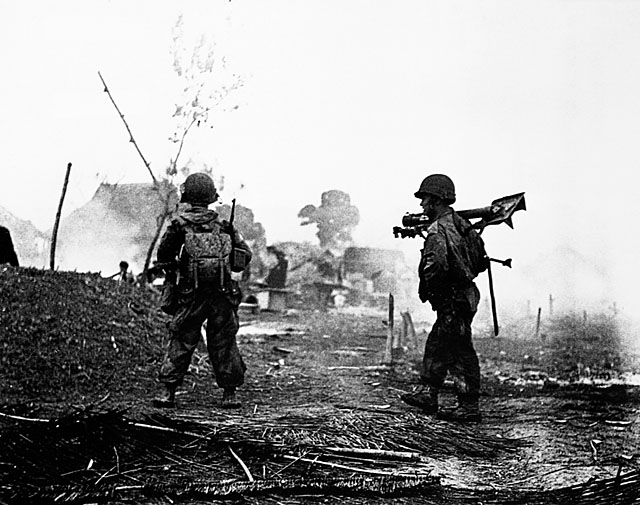 were locked in an increasingly vicious dispute over combat tactics and strategy. There were also weaknesses in the French Army. How could the French have won? By this standard Dien Bien Phu was a perfect failure, rather in the style of the CIA’s misguided Bay of Pigs operation. Everything hinged on the French Army. were locked in an increasingly vicious dispute over combat tactics and strategy. There were also weaknesses in the French Army. How could the French have won? By this standard Dien Bien Phu was a perfect failure, rather in the style of the CIA’s misguided Bay of Pigs operation. Everything hinged on the French Army.
The Brotherhood
Many accounts of Dien Bien Phu, in discussing French performance, focus on the factors of war weariness and the polyglot nature of the Expeditionary Corps. France had come to see Indochina as “la sale guerre,” the “dirty war,” and many Frenchmen were loath to fight for such a cause. As for the Expeditionary Corps, it comprised a kaleidoscope of units from Metropolitan France, North Africa, sub-Saharan Africa, Vietnam, and the Associated States of Indochina. There also was the renowned Foreign Legion. And the new Vietnam National Army (later to become the ARVN) was represented by a parachute battalion. Welding this mass into a coherent fighting force had to be a constant preoccupation. There is substance in these explanations, but both are oversimplified.
The dirty war had gone on since 1946—and the conflict had begun despite negotiations that might have reconciled Vietnamese revolutionaries with the French Union. Those circumstances had made for controversy from the start, and with France a multiparty country having strong socialist and communist parties (in fact, socialists were in power when the war began), there was plenty to dispute.
On at least two occasions French dockworkers had gone on strike rather than load ships bound for Indochina, and communist labor organizers had encouraged workers to slow down production of military equipment. The French Army had actually used paratroopers to replace dockworkers. French Army draftees ordered to the war once had mutinied in their barracks. In response, the French National Assembly in 1950 restricted the service of draftees to France and North Africa.
There had been a major French defeat along the Chinese border late in 1950, and by the time of Dien Bien Phu the Viet Minh were stronger than ever. Support for the war was further weakened by political scandals, including one in which high-level military plans had been leaked to the press and another where currency manipulations had come into the open, revealing some of the corruption surrounding the war. The opium trade, which the French military and Viet Minh struggled to dominate, each for their own purposes, was known in some quarters but publicly was only a rumor.
Opinion polls nevertheless showed strong support for negotiations from the spring of 1947 on. In the summer of 1953, when Gen. Navarre took command, 65 percent of the French wanted an end to the war, 46 percent favored negotiations, and 19 percent preferred outright withdrawal. According to Jules Roy, a journalist and former air force officer, the expression common in France was that money, women, and power were the ruling motives in the war.
From the standpoint of Dien Bien Phu, however, the real question is the extent to which such public attitudes had an impact on military performance. The evidence isn’t clear. Lt. Moissinac, for example, had volunteered for the Far East. Available source materials furnish service biographies for nearly a hundred officers at Dien Bien Phu, including the vast majority of those killed. The data show that more than one-fifth of reservists, despite the provisions of law, had volunteered for Indochina or had opted to join the regular forces and then been assigned there. Further, although the French military academies (St. Cyr, Saumur) commissioned the majority of officers who perished in the fight, nearly a third had risen from the ranks through various reserve officer programs and elected to do so despite the high probability that an officer would be assigned to Indochina or asked to volunteer. Such proportions do not indicate an army disillusioned by la sale guerre.
Sometimes the composition of the Expeditionary Corps is funneled into the pot, the argument being that France did not dare send its Metropolitan forces to fight this war. In the spring of 1953 there were 177,000 soldiers in the CEFEO, 54,000 of them French. Some 20,000 served in the Foreign Legion. By comparison, there were 30,000 North Africans and 18,000 Africans, primarily from Senegal. Most units were filled out with Vietnamese, some 55,000 in all with the Corps.
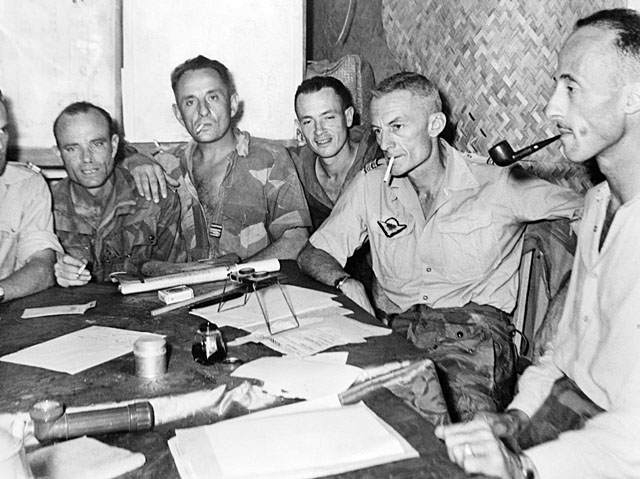 But this accounting does not consider the nature of the French military. Dating from the Empire, France had had two militaries, the Metropolitan Army and the Colonial Army. Indochina, of course, had been a French colony. The kernel of the French forces there at the end of World War II were from the Colonial Army, and the conflict had begun as a colonial war. Moreover, it was the Colonial Army that had saved France in World War II, forming the core of the Free French forces after the Metropolitan Army was destroyed very early by the German invasion of France. Polyglot though they were, these units had fought campaigns in Tunisia, Italy, France, and Germany, and then almost immediately went to war in Indochina.
But this accounting does not consider the nature of the French military. Dating from the Empire, France had had two militaries, the Metropolitan Army and the Colonial Army. Indochina, of course, had been a French colony. The kernel of the French forces there at the end of World War II were from the Colonial Army, and the conflict had begun as a colonial war. Moreover, it was the Colonial Army that had saved France in World War II, forming the core of the Free French forces after the Metropolitan Army was destroyed very early by the German invasion of France. Polyglot though they were, these units had fought campaigns in Tunisia, Italy, France, and Germany, and then almost immediately went to war in Indochina.
There were important cleavages in the French Army after World War II. The most vital was the forging of a unified military instrument from disparate elements. A quarter of the officers in the entrenched camp had fought with the French Resistance. Equal portions of about 12 percent each had been with the Free French forces only, or with the Vichy collaborationists. Meanwhile, reflecting military traditions everywhere, the top generals after the war had been senior officers before it—and representatives of the Old Army.
Resistance fighters and Free French adherents had difficulty integrating into the forces, particularly at their wartime ranks. This was especially painful in French postwar society which, given the “dirty war” perspective, undervalued military service. One study that compared military pay with that of the civil service found that a lieutenant colonel at top grade was paid an amount equivalent to that of the seventh-highest civil service rank in 1945, but by 1950 had fallen to fourteenth. Army lieutenants were tied for the lowest pay with elementary school teachers. Combat pay could bring officers just about up to that of civil servants at comparable ranks. War service also offered the possibility of faster promotions. Officers were tempted by the Colonial Army.
Fighting started in Indochina when the Metropolitan forces were just beginning to reconstitute. It was inevitable that this would be the war of the Colonial Army. The metropole supplied certain elite paratroop battalions, a few regular formations, specialist artillery, engineer and communications units, and—most importantly—the officer and noncommissioned officer cadres for all the CEFEO.
Despite this, the Colonial Army was a French army. The data show that 90 percent were born in France. Most of the rest were Frenchmen born in the colonies. The entrenched camp’s garrison included three Algerian and one Moroccan battalion, plus the battalion of Vietnamese paratroopers parachuted in. Battalions in the field at this time typically had between fifteen and twenty officers. Yet there are records for only two Algerian officers and just one Vietnamese.
There were important similarities—and also differences—between the experiences of Frenchmen battling in Indochina and those of Americans later. The French quite frequently moved whole units into or out of the fight (as the United States has done in Iraq and Afghanistan). Often this took place with pomp and circumstance. Many paratroop officers spent time at Sétif, Algeria, before departing for Indochina. Both Metropolitan and Foreign Legion paratroop battalions went by rail from Sétif to Algiers to meet the troopship for Saigon or Haiphong. The Legion practice was to mark departure day with a parade at which the band would play the Legion’s official march as families lined the street.
Units already in Indochina also were more frequently disbanded. For the French there was much less of a “Freedom Bird” phenomenon. Though more than a quarter of deployments were sent by plane from (or to) France or North Africa, this was more common for sending urgently needed specialists and senior officers, or for repatriating wounded. More than 70 percent of the men went and returned by troopship.
Similarities abounded in the war itself. Two French officers won the allegiance of a district by helping the Vietnamese to husband pigs. Maj. Marcel Bigeard, on an earlier Indochina tour, organized the first combat battalion of T’ai Montagnards. Americans would recognize those pacification experiences. Formulas repeated to excess began to fail. Important elements of an expansion T’ai battalion, for example, deserted at Dien Bien Phu. And there were the endless and seemingly futile sweep (search-and-destroy) operations.
Above all, the Colonial Army was a professional army. It had borne the burden of World War II and over long decades had expertise in quelling colonial uprisings, among them one in Vietnam a decade before World War II. Navarre’s predecessor in command, Gen. Raoul Salan, was called “the Chinaman” due to his long service in Indochina.
With the single exception of the chief of staff to Col. Christian de la Croix de Castries, the entrenched camp’s commander, the entire top echelon at Dien Bien Phu were men on their second or third tours. Jules Gaucher, leading the Foreign Legion’s 13th Demi-Brigade, had been in Indochina since 1940 and had even fought before at Dien Bien Phu in 1945 against the Japanese. Fully 40 percent of the officers were on their second tours.
Unlike the Americans later, French Army tours lasted two years, and were often extended. However often they had served, almost half the officers were already more than twelve months into their assignments, with an additional 15 percent having about a year in-country. Since the French kept officers in billets instead of kicking them upstairs, these men had had time to learn (or re-learn) the ropes. Just over 10 percent were recent arrivals.
What was true for the Colonial Army in general was especially so for the paratroops. And since once the siege began only airborne men could be sent, they were in essence the cream of the Expeditionary Corps. War correspondent-turned-novelist Jean Lartéguy writes of the paras as a sect or religious order. Jules Roy speaks of battalion messes “with the secrecy of confessionals” and men who had chosen the paratroops out of vocation. This was not all that far-fetched. Maj. Bigeard’s 6th Colonial Parachute Battalion was quartered at a convent in Hanoi. One of the young French officers at Dien Bien Phu had given up a cassock for the paras’ cammies.
The Foreign Legionnaires were equally tough. And the Algerian regiments had long been in friendly competition with the Legion. These men fought alongside—and for—their comrades. The outcome turned on whether a band of hard-bitten French professionals, with whatever backing they had, could prevail over the revolutionary fervor of the Viet Minh.
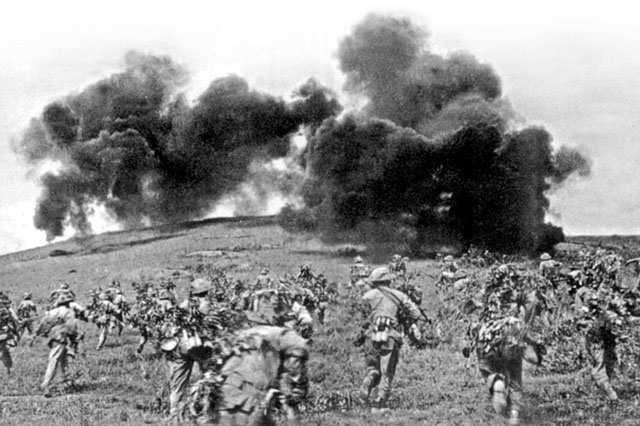
Perfect Failure?
Henri Navarre wrote two volumes of memoirs. The first, penned not long after the French defeat in Indochina, insisted that his plans had been advancing well when Dien Bien Phu began, and that the outcome had not been his fault. Navarre’s later reflection appeared in 1978, after much of the literature on Dien Bien Phu had been published. Critical of almost all those books—including those by Jules Roy and Bernard Fall—Navarre continued to put the majority of the blame on the government. Paris had not supported the Expeditionary Corps, had denied it reinforcements, and had agreed to negotiations on Indochina at Geneva, which spurred the Viet Minh and undercut his military efforts. Again the fault was not his. Defeat remains an orphan.
But French strategy and force deployments were all Navarre’s. His instructions before leaving for Indochina were to stabilize the military situation preparatory to a negotiation, so talks with the Viet Minh were anticipated. Signs of movement in that direction were evident in an interview Ho Chi Minh gave to a Swedish journalist as the French were capturing Dien Bien Phu and from joint Anglo-French-American conversations held at Bermuda four months before the battle. Navarre claims he was never informed of the forthcoming talks on Indochina, but the agreement to put that on the agenda came at a conference in Berlin in January 1954. The results of Berlin were a matter of public record. That was two months before the battle.
By January 1954 the entrenched camp had been closely encircled, making a French withdrawal virtually impossible. Yet it remained feasible to harden Dien Bien Phu to withstand a powerful offensive, reinforce its reserve capability, and endow it with a fully protected artillery complement. Navarre did none of those things.
Preoccupied with his own plans for a French offensive in central Vietnam, he withheld additional forces for Tonkin. Having underestimated the scale of Viet Minh attack potential, he also did not insist that Gen. Cogny complete Dien Bien Phu’s defenses. This is especially baffling because by this time French intelligence knew that the Viet Minh had marched the bulk of its main force to the entrenched camp.
The French air force proved unable to apply sufficient firepower against Viet Minh supply lines to close them or significantly retard the enemy buildup. There is no record that Navarre did anything about that either. Navarre complained of the inadequacies of the French air force in his memoirs, but studies of the campaign by French military experts disclose no orders from Navarre pertaining to air force operations after his initial directives in December 1953. It was the government in Paris, not Navarre, that took steps to add a B-26 bomber wing and more transport aircraft to the forces in Indochina. That, too, says something about Henri Navarre’s saddling his political superiors with the responsibility for disaster.
So the Expeditionary Corps—Lt. Moissinac by happenstance, his colleagues quite deliberately—were left, as the French like to say, “in the soup” at Dien Bien Phu.
John Prados is a senior fellow of the National Security Archive and a frequent contributor to The VVA Veteran. His current book, on the South Pacific in World War II, is Islands of Destiny: The Solomons Campaign and the Eclipse of the Rising Sun (NAL/Castle).
|
 |
|
|

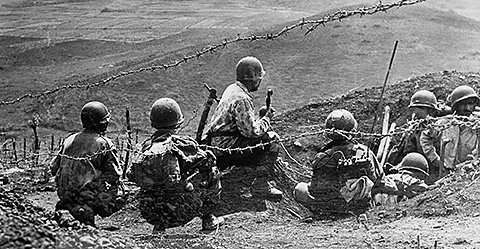









 Lt. Moissinac had a reasonable basis for judgment—and not simply because a staff officer of the Corps expéditionnaire français en Extrême Orient (CEFEO) accompanied him. Moissinac was a mechanized officer, a veteran of hard fighting with the Foreign Legion’s 1st Cavalry Regiment near Hue and along the Perfume River—the notorious “Street Without Joy” that the French had attempted to secure with a big sweep in the spring and summer of 1953. Before that he had been with the French Battalion in Korea, fighting alongside United Nations forces. In World War II he had fought with the French Resistance in his native Cher in Central France. Moissinac had volunteered for Korea and gone there as a reserve officer. Then he’d been sent to Indochina.
Lt. Moissinac had a reasonable basis for judgment—and not simply because a staff officer of the Corps expéditionnaire français en Extrême Orient (CEFEO) accompanied him. Moissinac was a mechanized officer, a veteran of hard fighting with the Foreign Legion’s 1st Cavalry Regiment near Hue and along the Perfume River—the notorious “Street Without Joy” that the French had attempted to secure with a big sweep in the spring and summer of 1953. Before that he had been with the French Battalion in Korea, fighting alongside United Nations forces. In World War II he had fought with the French Resistance in his native Cher in Central France. Moissinac had volunteered for Korea and gone there as a reserve officer. Then he’d been sent to Indochina.


